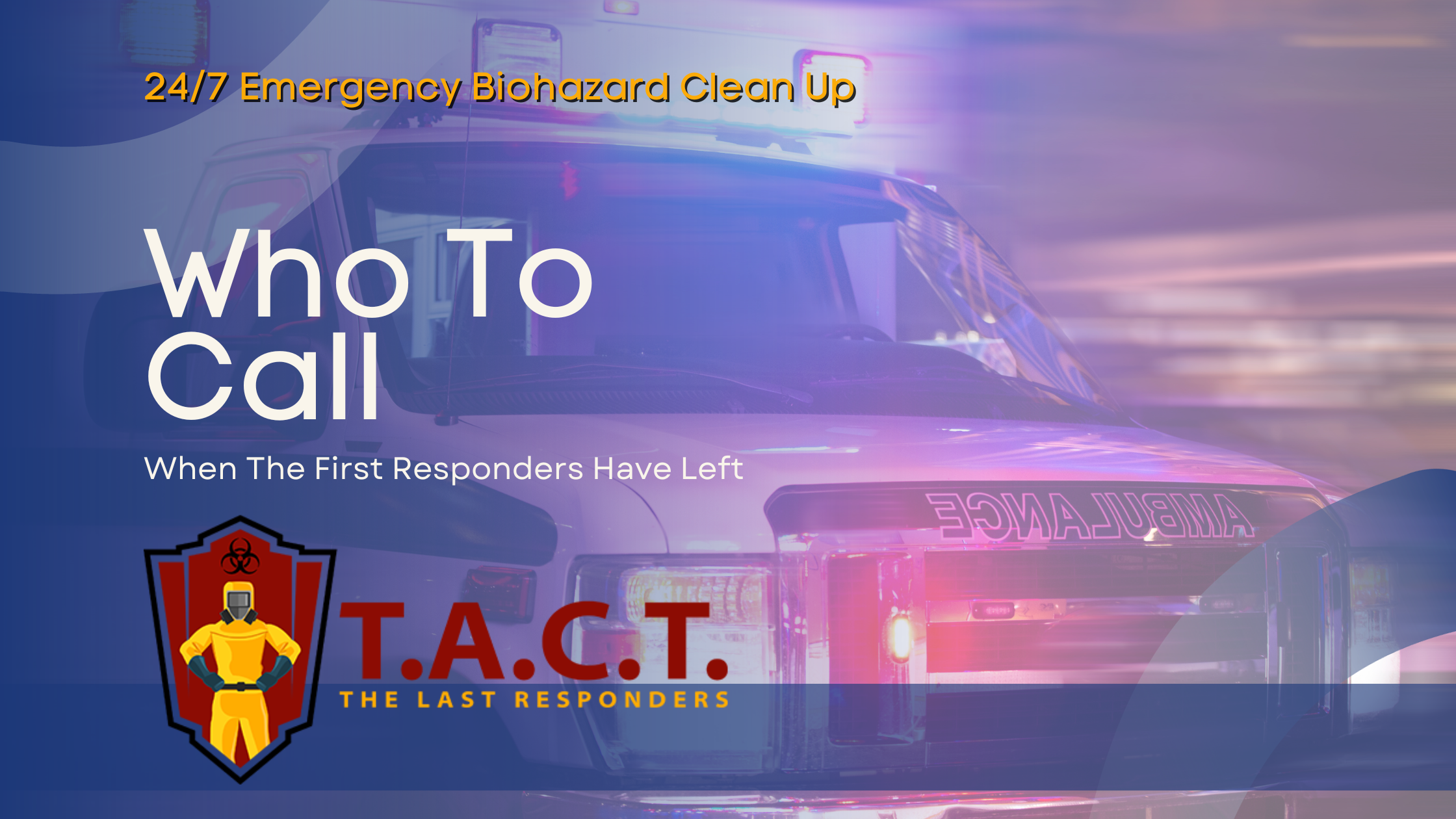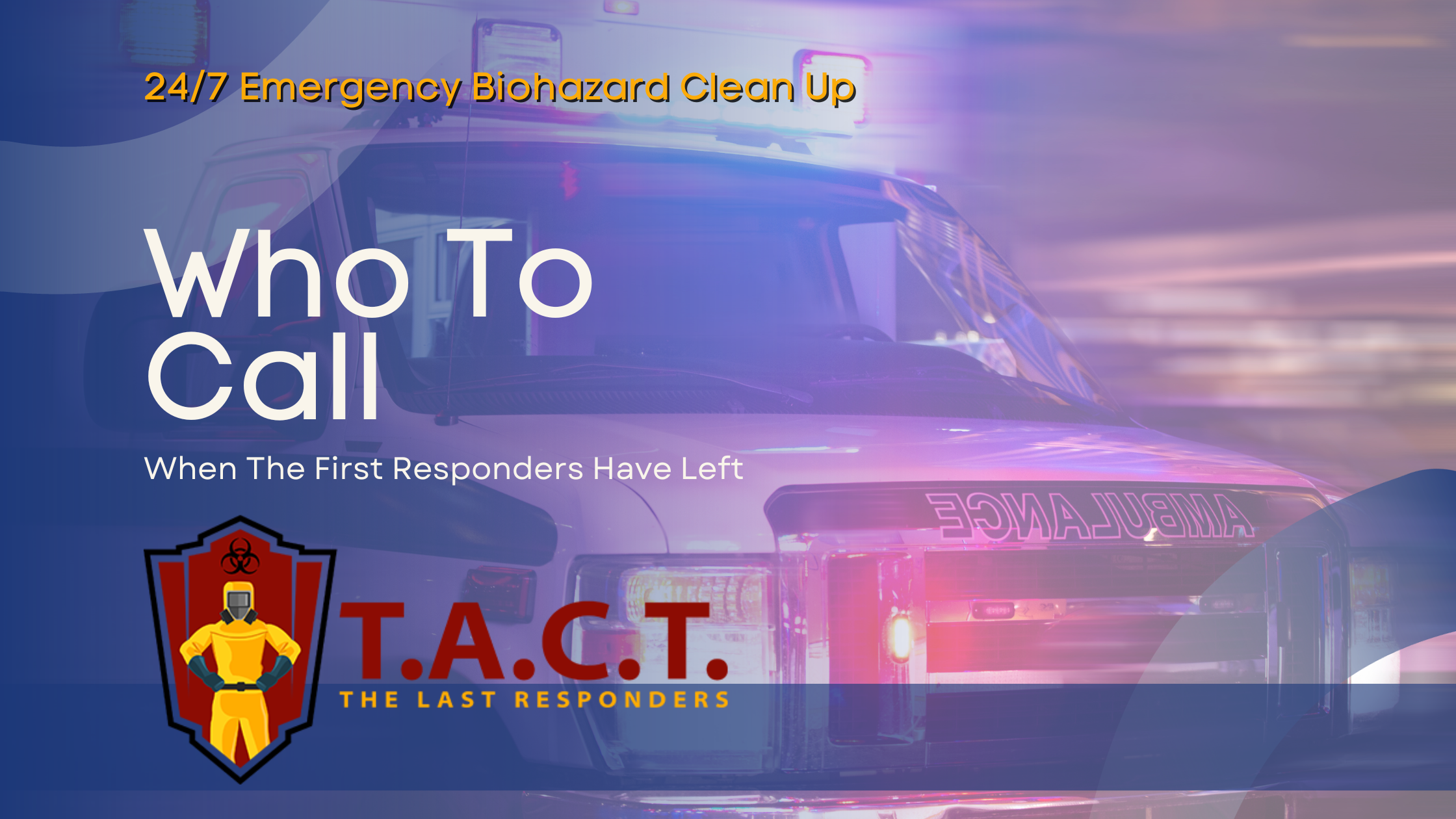remediation for mold
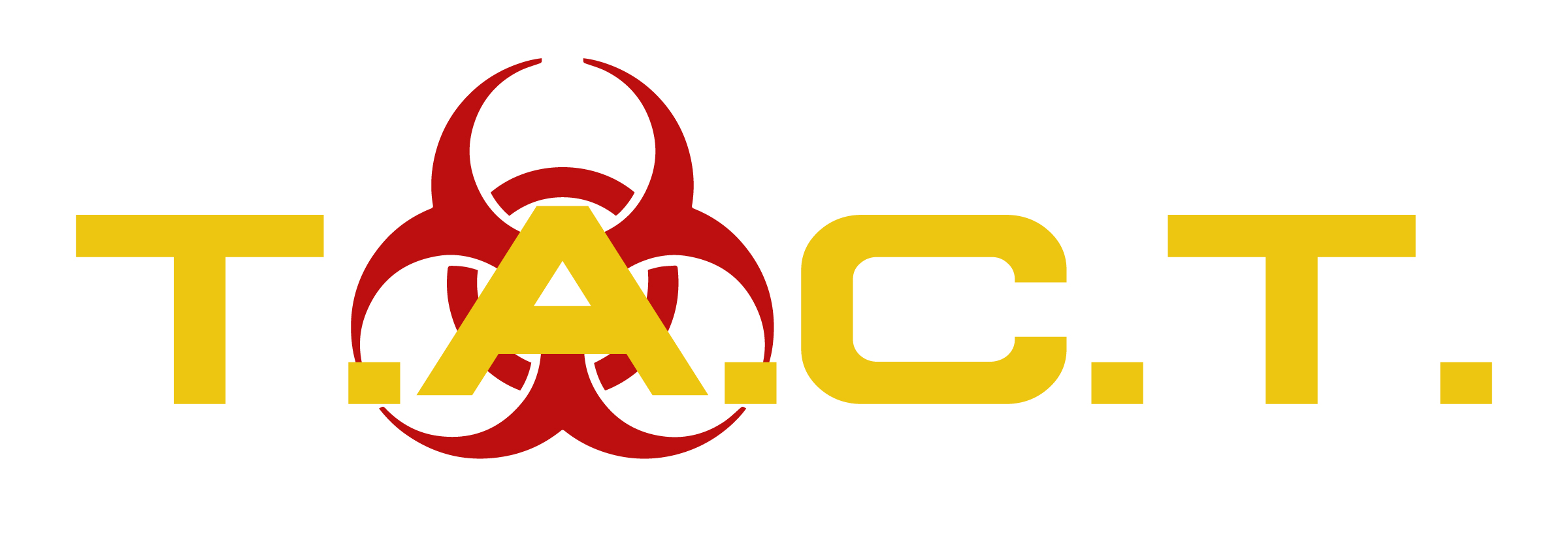
Top Strategies for Effective Remediation for Mold
Dealing with mold in your home? Mold remediation is essential for identifying, eliminating, and preventing mold from coming back. This guide on remediation for mold covers everything from initial assessments to final repairs, ensuring your home stays safe and mold-free.
Key Takeaways
Mold remediation is crucial for eliminating infestations, protecting health, and maintaining property value through early detection and moisture control.
Key steps in mold remediation include thorough assessments, containment of contaminated areas, removal of affected materials, and proper cleaning and encapsulation techniques.
Hiring professional mold remediation services ensures effective handling of mold issues, utilizes advanced techniques, and minimizes risks during the remediation process.
Understanding Mold Remediation
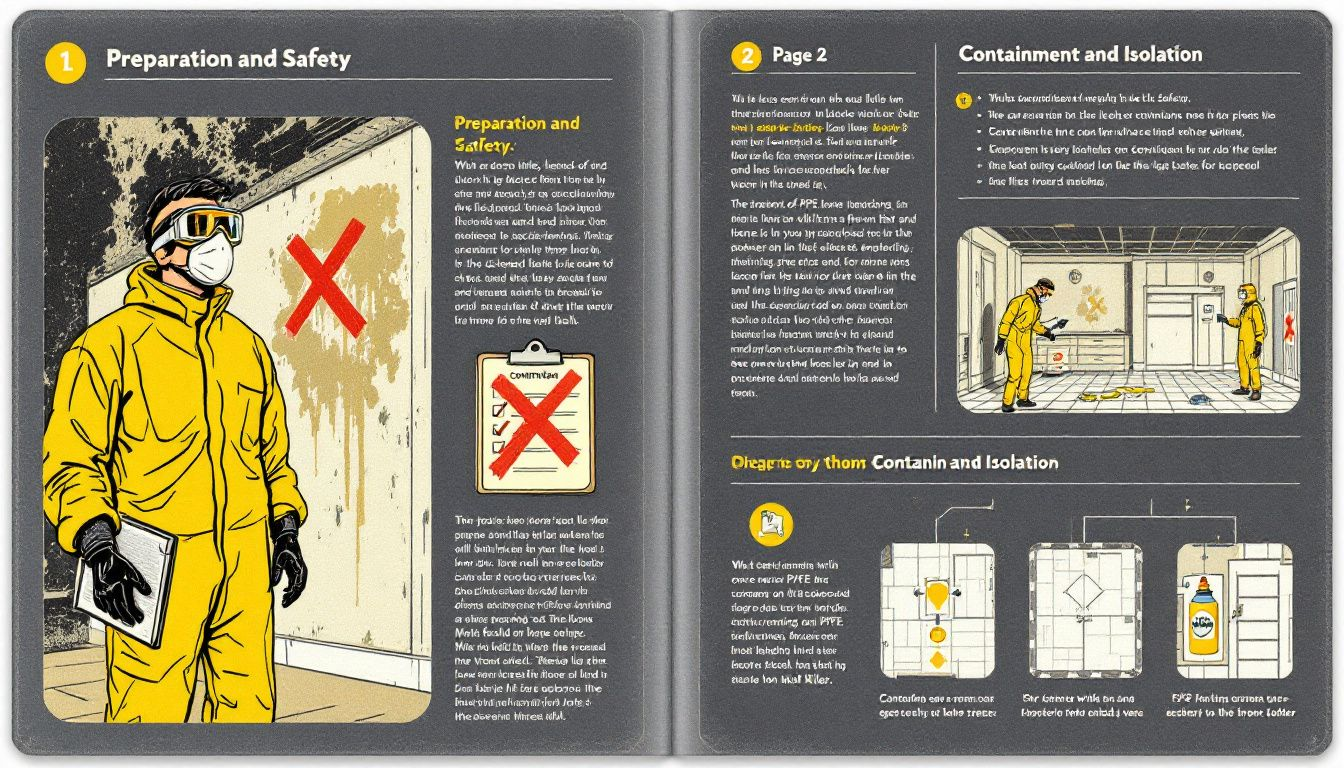
Mold remediation is the process of identifying and eliminating large-scale mold infestations in homes. This crucial task goes beyond simple mold removal, ensuring mold doesn’t return and protecting both the home’s structural integrity and the health of its occupants. Prolonged exposure to mold can lead to severe health issues, especially for those with respiratory conditions, causing symptoms ranging from allergic reactions to runny noses and, in extreme cases, more severe health complications.
Early detection and remediation of mold can significantly reduce repair costs and enhance the market value of a property. The mold remediation process involves several key steps, from initial assessment to clearance testing, ensuring that the home environment is not only mold-free but also healthier and safer.
Initial Mold Assessment
The first step in the mold remediation process is the initial mold assessment. This begins with a thorough inspection, moisture survey, and air quality assessment to identify visible signs of mold and locate hidden water sources. Professionals use various techniques and tools to detect mold presence and moisture issues, ensuring a comprehensive evaluation.
During the assessment, professionals document their findings in detail, noting any moisture issues and the extent of the mold problem. Isolating contaminated areas is crucial to prevent mold spores from spreading during the inspection process. Identifying the root causes and extent of the mold infestation during the initial assessment sets the foundation for effective remediation.
Moisture Control
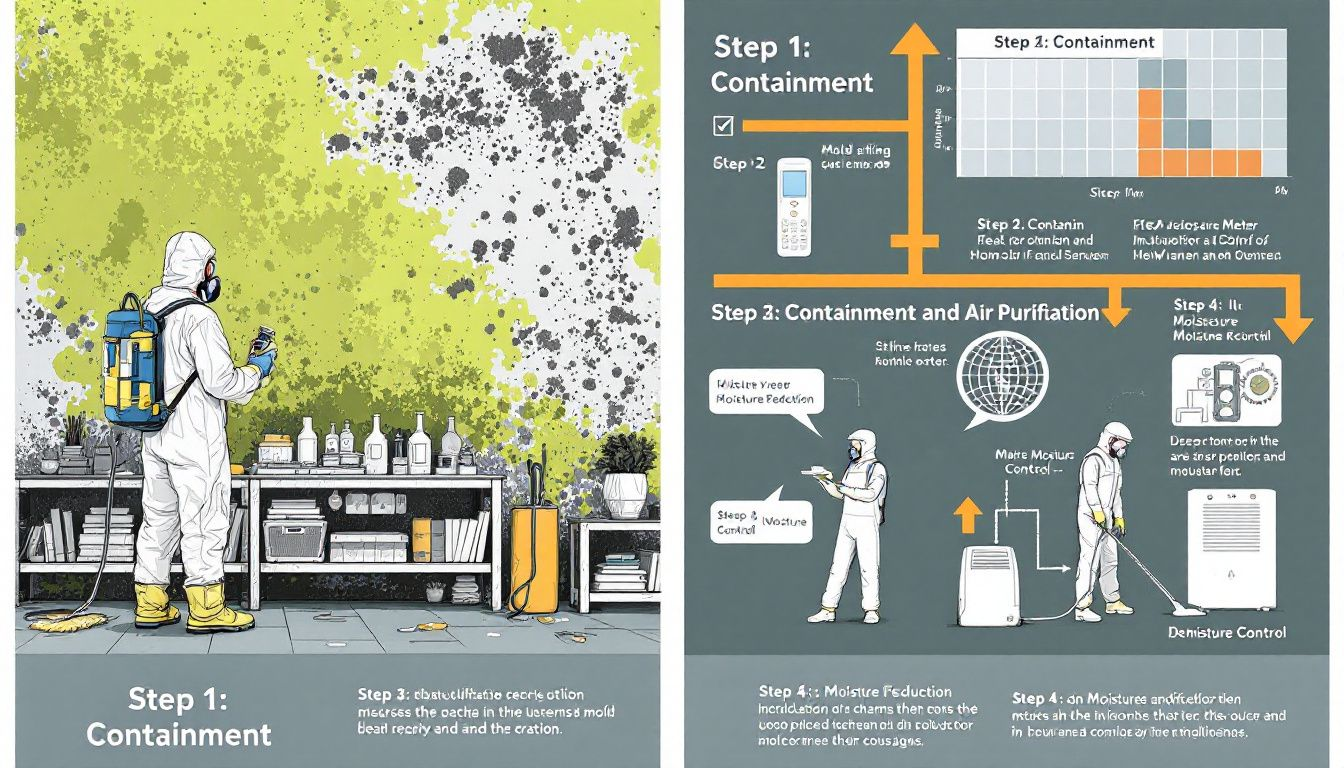
Controlling moisture is paramount in the fight against mold. Mold thrives in damp environments, so addressing leaks and water-related issues immediately is essential. Repairing leaking pipes and faucets, ensuring proper installation of flashing around windows, and maintaining a grading slope away from the home are all critical measures.
Maintaining indoor humidity levels below 60% and increasing air circulation can significantly help control moisture in the home. Using exhaust fans while cooking or bathing, regularly cleaning gutters, and thoroughly drying affected areas after water damage are practical steps to prevent mold regrowth.
Implementing these moisture control solutions helps prevent future mold growth and safeguards your home.
Containing Mold Spores
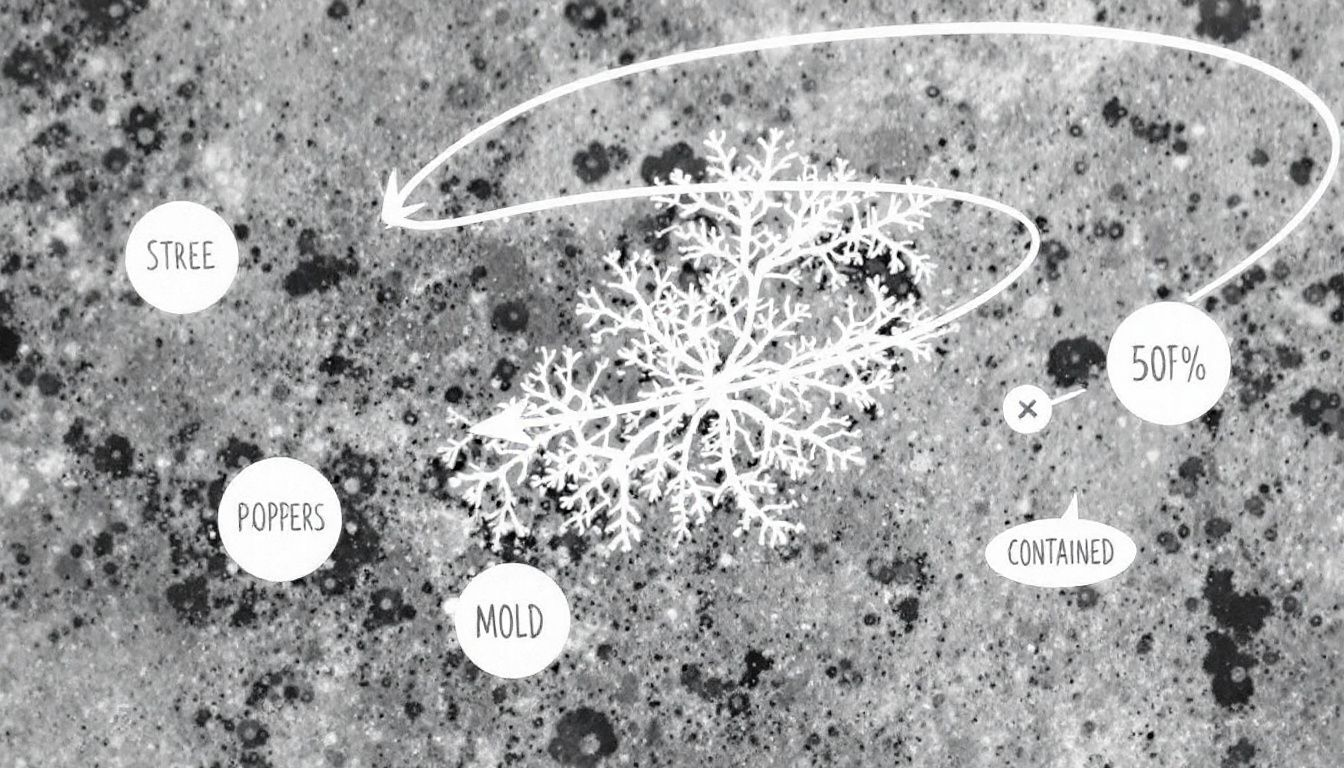
Isolating contaminated areas is necessary to prevent the spread of mold spores during remediation. Plastic sheeting or polyurethane sheeting is commonly used to seal off mold-damaged areas, creating a physical barrier that contains the spores. Negative air systems that filter out airborne spores further reinforce this containment, preventing contamination in other parts of the home.
Disposing of moldy materials must be done according to local regulations, often requiring double-bagging in heavy-duty polyethylene bags. These containment procedures are vital to ensure that mold spores remain confined to the affected areas, preventing further spread and contamination.
Removing Affected Materials
Removing mold-infested materials is a critical step in the mold remediation process. This often involves the removal of drywall, carpeting, and insulation that have been compromised by mold. Damaged items must be packaged, sealed, and sprayed to eliminate spores before disposal, ensuring that the mold does not spread during the remove mold process.
Mold-infested materials should be sealed in thick, airtight bags and disposed of following local regulations, adhering to EPA standards. Proper disposal of these materials is essential to prevent mold spores from re-entering the home environment and causing more mold problems.
Cleaning and Disinfecting Surfaces
After the removal of mold-infested materials, thorough cleaning and disinfecting of surfaces is necessary. Moldy surfaces should be cleaned using EPA-registered fungicides, which are more effective than chlorine bleach. A damp cloth or sponge can be used to wipe mold from non-porous surfaces, while wet vacuums can remove moisture without spreading spores.
Surfaces must be thoroughly dried after cleaning to prevent mold from returning. Using a HEPA vacuum can capture tiny mold spores, improving indoor air quality post-remediation. Additionally, air scrubbers help filter out airborne mold spores during the cleaning process, ensuring a cleaner and safer environment.
Encapsulation Techniques
Encapsulation is a method used to prevent mold from regrowing on treated surfaces. Before encapsulating an area, most of the mold must be removed, and the affected area must be dry. A biocide is applied and allowed to work overnight to kill any remaining mold spores.
Once the surface is dry, a special mold-resistant paint or coating is applied to seal the treated area. This encapsulation technique ensures that mold does not return, providing a long-term solution to mold problems.
Final Inspection and Clearance Testing
Post-remediation clearance testing is conducted to ensure that the mold problem has been completely eliminated. This involves re-inspection for humidity, moisture readings, visual cues, and airborne spore testing to confirm that the remediated area is safe for reconstruction.
Independent mold inspectors conduct these assessments, comparing indoor mold spore levels with outdoor samples to ensure they are within clearance standards. If the results meet the required standards, a clearance testing certificate is issued, indicating that the remediation has been successfully completed.
Restoration and Repairs
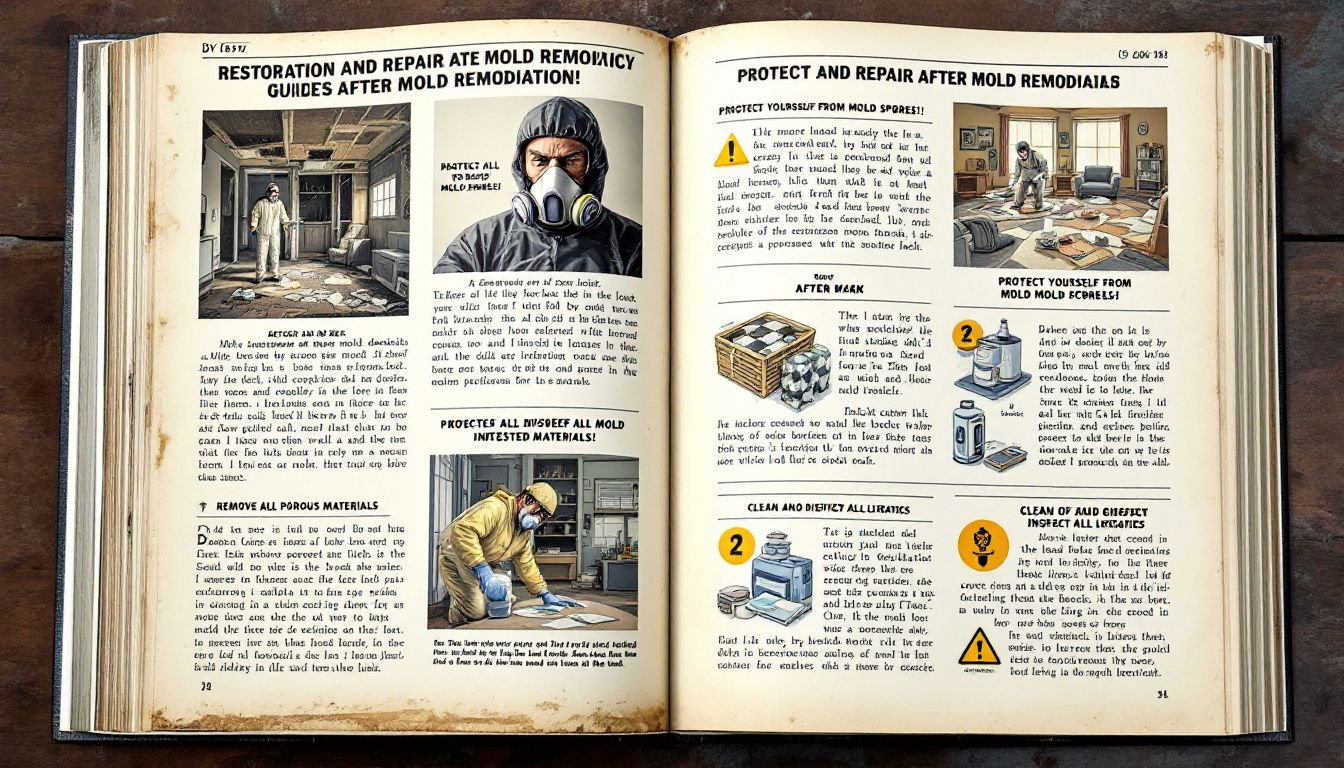
The final step in the mold remediation process is restoration, which ensures that the affected areas meet safety standards. Depending on the extent of the mold damage, restoration can involve both minor and major repairs. This may include replacing building materials such as drywall, subfloors, and insulation during mold cleanup.
In severe cases, significant reconstruction might be necessary, including plumbing and electrical repairs. Minor repairs may include tasks such as painting and installing new carpet. Additionally, they can involve replacing small sections of drywall. The goal is to restore the home to its pre-damage state, ensuring a safe and healthy living environment.
Working with Professional Mold Remediation Services
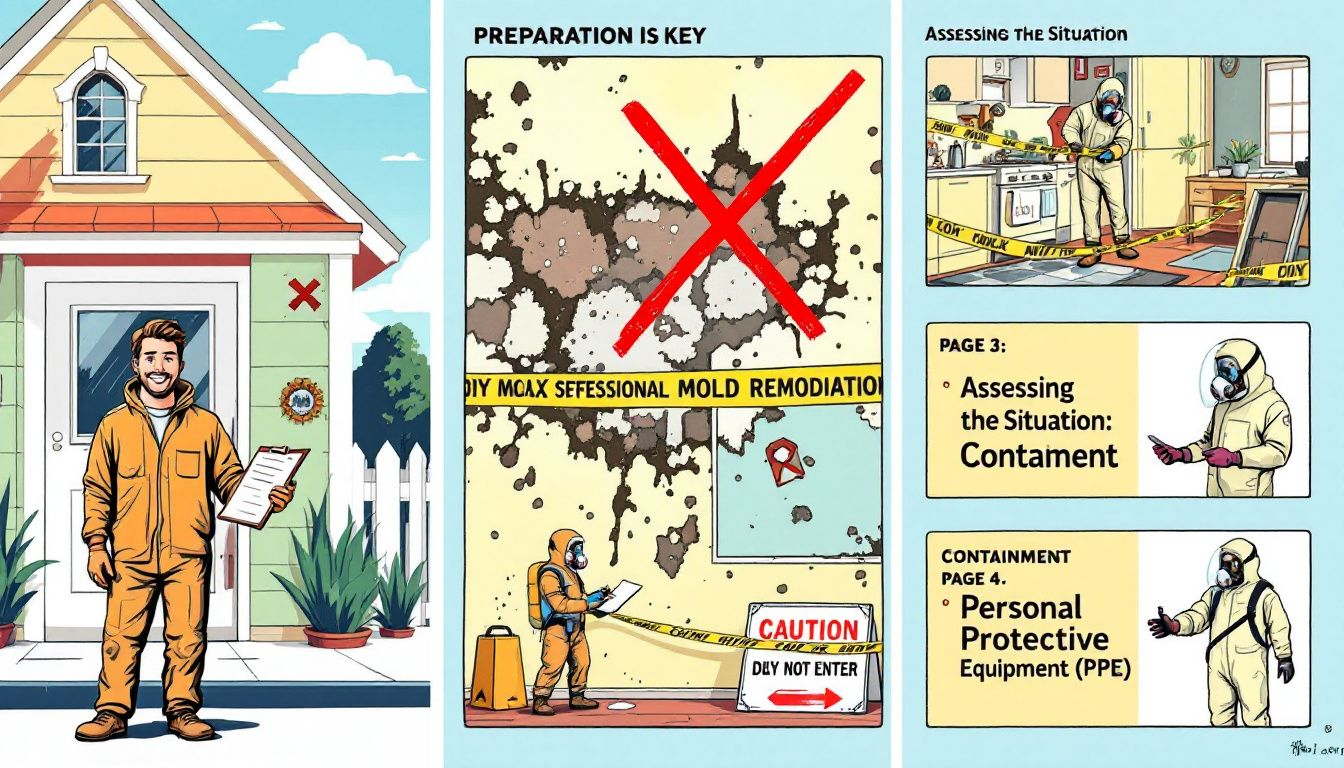
Hiring professional mold remediation services ensures thorough and effective mold removal, preventing its return. Professionals possess the necessary expertise, tools, and credentials to handle mold situations safely and efficiently. A mold remediation contractor follows standard practices and uses advanced techniques to improve indoor air quality by eliminating airborne mold spores.
Licensed and insured professionals offer financial protection in case of accidents during the remediation process, saving time and preventing the spread of mold throughout your home. When selecting a mold remediation company, consider factors like cost, the extent of mold-prone areas, and the types of mold affecting your home.
Tips for Preventing Future Mold Growth
Controlling dampness is the key to preventing mold growth in the future. Ensure good ventilation, keep crawl spaces dry, and route water away from the foundation to avoid moisture problems. Damp crawl spaces, attics, and walls with leaks are common places for severe mold infestations. Basements with inadequate drainage can also be a significant factor.
Using paint that contains mildewcide can help control surface mold, providing an extra layer of protection against mold infestations. By following these preventive measures, you can significantly reduce the risk of future mold problems and maintain a healthy home.
Summary
Effective mold remediation involves a series of crucial steps, from initial assessment to final restoration. Identifying and addressing moisture issues, containing mold spores, removing affected materials, and thorough cleaning are essential components of the process. Encapsulation, clearance testing, and professional services further ensure a comprehensive solution to mold problems.
Taking proactive steps to prevent future mold growth, such as controlling dampness and using mold-resistant materials, can safeguard your home from mold infestations. By following these strategies, you can maintain a healthy, mold-free environment and protect your property from mold damage.
Frequently Asked Questions
What is mold remediation?
Mold remediation is the comprehensive process of identifying, removing, and preventing large-scale mold infestations in homes. This ensures a healthier living environment free of mold-related issues.
Why is moisture control important in mold remediation?
Moisture control is essential in mold remediation since mold thrives in damp conditions; by addressing leaks and maintaining low indoor humidity, you can effectively prevent mold growth.
What are the steps involved in mold assessment?
A thorough mold assessment involves conducting a detailed inspection, a moisture survey, an air quality evaluation, and documenting findings to determine the extent of mold contamination. Following these steps ensures a comprehensive understanding of the mold issue.
How can I prevent future mold growth in my home?
To prevent future mold growth in your home, control dampness, ensure proper ventilation, keep crawl spaces dry, and consider using mold-resistant paint. Taking these steps will help maintain a healthier living environment.
Why should I hire professional mold remediation services?
Hiring professional mold remediation services guarantees thorough and effective removal of mold while preventing its return and improving indoor air quality. Their expertise and specialized equipment ensure safe and efficient handling of the issue.
Latest news

Nosy neighbors peeking? T.A.C.T. North Atlanta offers discreet biohazard remediation for rodent infestations, mold, hoarding, and more. Unmarked vehicles, quiet experts, full privacy—24/7 service at 470-781-4775.
Read More
